#Harriet Tubman biographies
Text
U.S History | The Underground Railroad & Harriet Tubman's Fight To Free The Enslaved
U.S History | The Underground Railroad & Harriet Tubman’s Fight To Free The Enslaved
“I was the conductor of the Underground Railroad for eight years, — I never ran my train off the track and I never lost a passenger… If you hear the dogs, keep going. If you see the torches in the woods, keep going. If there’s shouting after you… Don’t ever stop. Keep going. If you want a taste of freedom, keep going.” – Harriet Tubman
(more…)
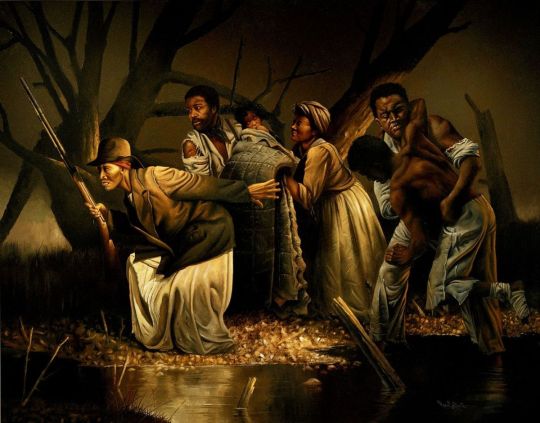
View On WordPress
#American Civil War#American History#BOOKS#For what is Harriet Tubman best known?#Harriet Tubman#Harriet Tubman biographies#history#U.S CIVIL WAR#U.S History#Underground Railroad#What is Harriet Tubman famous for#world history
2 notes
·
View notes
Text
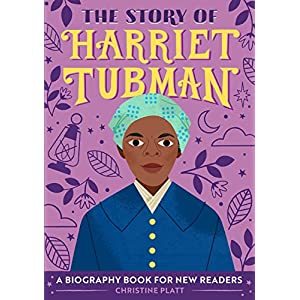
0 notes
Video
youtube
New films highlight the ongoing relevance of Harriet Tubman and Frederick Douglass, October 6, 2022
Harriet Tubman and Frederick Douglass are the latest subjects of a filmmaker long-engaged in telling the contributions and challenges of African Americans. Two new PBS documentaries focus on the 19th-century giants who helped lead the fight to end slavery in America. Jeffrey Brown sat down with filmmaker Stanley Nelson for our arts and culture series, "CANVAS."
PBS NewsHour
#Becoming Frederick Douglass#Frederick Douglass#Harriet Tubman#Harriet Tubman: Visions of Freedom#American#history#slavery#19th century#documentary#PBS#PBS NewsHour#black history#films#Stanley Nelson#relevant#media#biography#activism#abolitionism#portrait#underground railroad
0 notes
Text
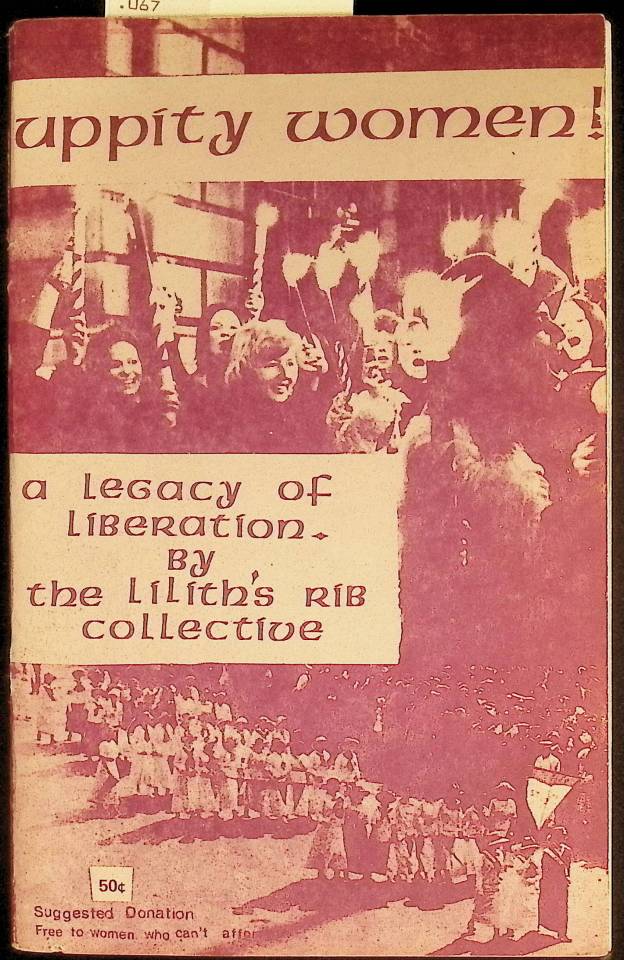
Uppity Women: A Legacy of Liberation (1974) by the Lilith's Rib Collective at Hunter College
From the introduction:
We are a group of women students at Hunter College who are working for the implementation of a Women's Studies Department at Hunter. Given an enrollment that is 73% women and a long background as a women's college, we feel that it is time for us to learn about our HERitage and with this goal in mind we are working both politically and educationally.
We have chosen to name ourselves after Lilith. She was first mentioned in Assyrian myths as a wind spirit and later played a major part in early Hebraic lore. She is mentioned in the Alphabet Ben Sira as the first woman, created simultaneously with Adam. Being thus created, Lilith refused to accept Adam's claim of supremacy and left him, after refusing to lie beneath him during intercourse. She went to live by the Red Sea. We have chosen her as a symbolic starting point to our heritage.
Our motivation to write this book comes out of our own experiences as women. It is an effort to connect with a rich past that has been denied us. Our purpose is to briefly introduce you to some of these women whose lives have been lost to us and who were the Foremothers of our Woman's Culture. We hope that this will encourage you to rediscover Women's history and to participate in the struggle that lies ahead.
In Sisterhood,
The Lilith's Rib Collective
It includes biographies of Susan B. Anthony, Mary McLeod Bethune, Marie Sklodowska Curie, Isadora Duncan, Amelia Earhart, Emma Goldman, the Grimké Sisters, Anne Hutchinson, Mother Jones, Maria Mitchell, Esther Hubart Morris, Emmeline Goulden Pankhurst, Sacajewa, Margaret Higgins Sanger, Gertrude Stein, Lucy Stone, Sojourner Truth, Harriet Ross Tubman, Mercy Otis Warren, and Victoria Woodhill.
The Browne Popular Culture Library (BPCL), founded in 1969, is the most comprehensive archive of its kind in the United States. Our focus and mission is to acquire and preserve research materials on American Popular Culture (post 1876) for curricular and research use. Visit our website at https://www.bgsu.edu/library/pcl.html.
#bgsu#libraries on tumblr#women's history month#uppity women#lilith's rib collective#hunter college#Susan B. Anthony#Mary McLeod Bethune#Marie Sklodowska Curie#Isadora Duncan#Amelia Earhart#Emma Goldman#the Grimké Sisters#Anne Hutchinson#Mother Jones#Maria Mitchell#Esther Hubart Morris#Emmeline Goulden Pankhurst#Sacajewa#Margaret Higgins Sanger#Gertrude Stein#Lucy Stone#Sojourner Truth#Harriet Tubman#Mercy Otis Warren#and Victoria Woodhill#marie curie
11 notes
·
View notes
Photo



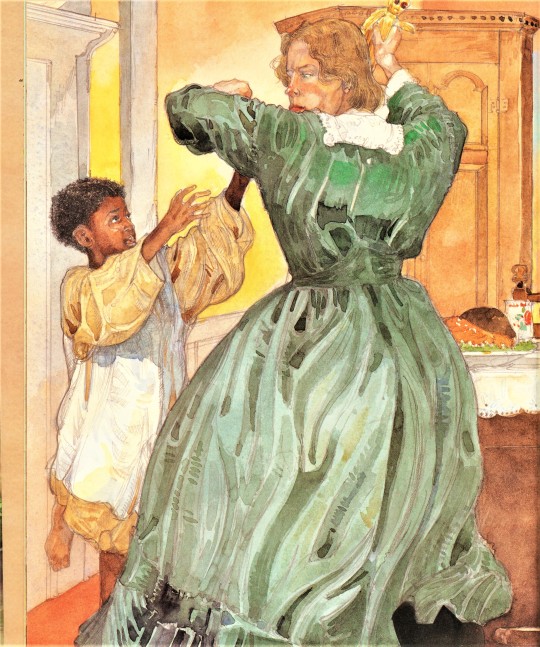
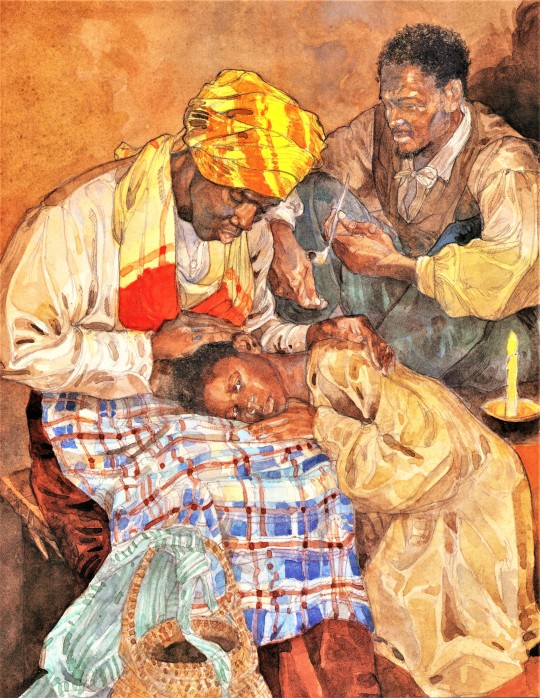

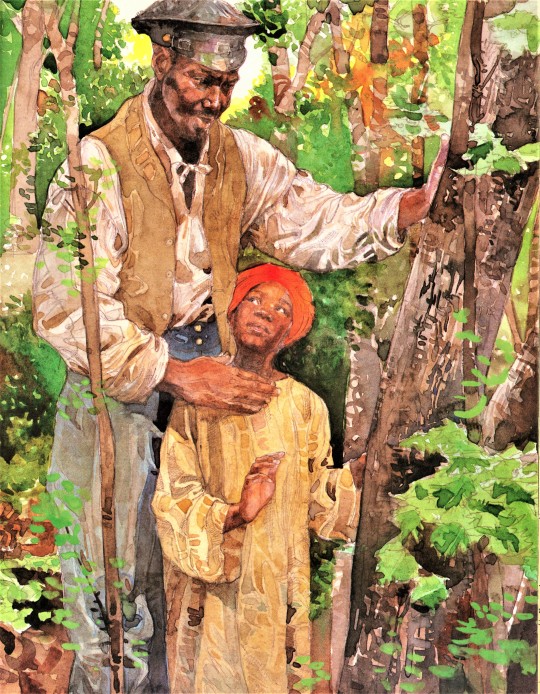
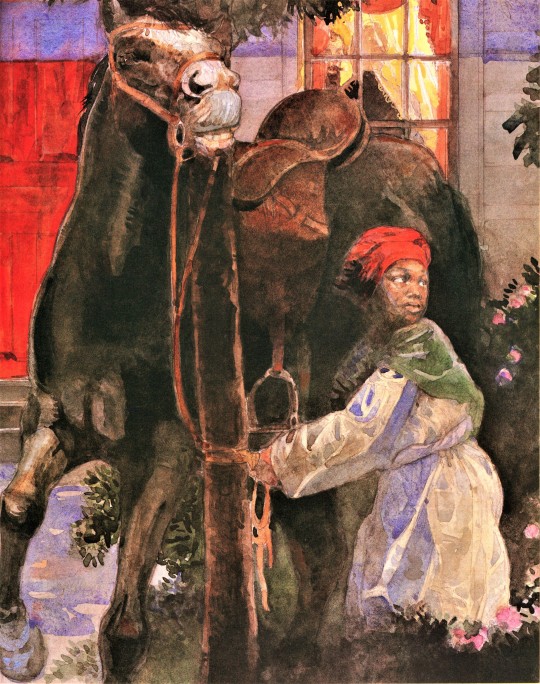


A Jerry Pickney Saturday
Jerry Pinkney (1939-2021) was a multi-award-winning American illustrator and children’s book author. His numerous awards include a Caldecott Medal (2010); five Caldecott Honor Book awards; five Coretta Scott King Book Awards (the most for any illustrator); five Coretta Scott King Honor Awards; the Coretta Scott King-Virginia Hamilton Lifetime Achievement Award (2016); the 2016 Laura Ingalls Wilder Award; four Gold medals, four Silver medals, and the 2016 Original Art Lifetime Achievement Award from the Society of Illustrators; and he was nominated twice for the Hans Christian Andersen Award, considered the Nobel Prize for children's literature, among many other awards and recognitions.
The images shown here are Pickney’s pencil, color pencil, and watercolor illustrations for children’s book author Alan Schroeder’s 1996 fictional biography, Minty, A Story of Young Harriet Tubman, published in New York by Dial Books for Young Readers. This book won Pickney the 1997 Coretta Scott King Book Award for Illustrator, and the book was a Cooperative Children's Book Center Choice for 1996.
Schroeder writes that “While Minty is a fictional account of Harriet Tubman’s childhood, and some scenes have been invented for narrative purposes, the basic facts are true.” Of illustrating this book, Pinkney writes:
The challenge that Minty initially posed for me came from not having a clear picture of Harriet Tubman’s early childhood. However, I was able to imagine the spirited eight-year-old Minty, using Alan Schroeder’s strong text and Harriet Tubman’s biography, The Moses of Her People, as springboards. The National Park Service was also helpful . . . as was the Banneker-Douglas Museum in Maryland, where extensive research uncovered the style of plantations around Maryland during Minty’s childhood and authentic details regarding backgrounds, dress, food, and living conditions of the enslaved as well as the slave owners. My interest was to give some sense of Minty’s noble spirit and open a window to understanding the day-to-day, sunup to sundown life of the slave, by individualizing the hardships in overwhelming circumstances.
In 1978 I was privileged to create the first Harriet Tubman commemorative stamp for the U.S. Postal Service. This book, then, brings me full circle with Harriet’s life and courage.
View another post with illustrations by Jerry Pinkney.
View more posts from our Historical Curriculum Collection.
View more Black History Month posts.
#Black History Month#Jerry Pinkney#African American artists#Black artists#African American History#Harriet Tubman#Alan Schroeder#Minty A Story of Young Harriet Tubman#Dial Books for Young Readers#Coretta Scott King Book Award#Cooperative Children's Book Center Choice#children's books#illustrated books#Historical Curriculum Collection
77 notes
·
View notes
Text
(JTA) — Bruce Friedman was moved by “The Diary of Anne Frank” when he read it at age 9. As a child in a kosher-keeping Jewish home on Long Island, he saw in the Holocaust memoir an essential lesson for Jewish and non-Jewish children alike.
“You learn to sympathize, empathize, share the fear and the horror and the fright and disgust with man’s inhumanity to man,” he recalled about the book. “And it’s not just the Nazis. It’s the human condition. We’re really good at hurting each other.”
And yet decades later, Friedman filed a challenge with his local school district in Florida to remove a new version of the diary from classroom shelves. The book, he wrote on a district form, “does disservice to lessons on the Holocaust.”
He added, in all-caps, “PROTECT CHILDREN!”
Last month, the local school board sided with Friedman and voted to remove “Anne Frank’s Diary: The Graphic Adaptation” from all grade levels in the district, with a spokesperson saying it was removed “based on state statute.” Also removed based on Friedman’s challenge: William Styron’s Holocaust novel “Sophie’s Choice.”
The successes followed two of hundreds of challenges Friedman has filed against books in Clay County, near Jacksonville, where he moved from New York during the pandemic. He has files on thousands more books that others have challenged. From his home there, the Jewish father has become one of the country’s most prolific and zealous participants in the movement to purge public schools of certain books.
The movement has largely targeted books featuring LGBTQ themes and content about racial equity, while catching books on other topics — including Jewish stories — in its dragnet. In Florida, Gov. Ron DeSantis has embedded the values of the movement into state law, making it easier for a small number of parents — or even just one — to force their districts to make books inaccessible to students.
The movement is most closely associated with a group called Moms of Liberty and inherits its worldview and tactics from decades of Christian family-values advocacy. But it turns out its flag-bearers can be Jewish dads, too.
Friedman recognizes that he stands out. “I figured we’d have a lot to talk about, Jew boy,” he told the Jewish Telegraphic Agency.
He stands out in another way, too. Unlike many of his fellow book challengers, Friedman, a self-identified “bibliophile,” insists he reads every book he seeks to remove. He documents his objections as he goes in reams of challenge forms that he stores in his home office.
In objecting to a children’s biography of Harriet Tubman, for example, he says, “Telling them that the Civil War was all about slavery is a lie.” The picture book “Arthur’s Birthday,” featuring the cartoon aardvark, was bad in his view because “it is not appropriate to discuss ‘spin the bottle’ with elementary school children.” To Friedman, “Americanah,” a prizewinning novel by Nigerian author Chimamanda Ngozi Adichie about the immigrant experience, is “a horrible piece of garbage.” Reading from his own file on the book, he listed off its problems: “Attempted suicide, immigration fraud, promiscuity, infidelity, abortion, racism, sex, critical race theory.”
For months Friedman has battled the Clay County school board over books, even becoming a conservative folk hero when his antics at a school board meeting drew censure. This week, when Friedman attempted to read from the Mindy McGuinnis novel “Heroine,” about the opioid crisis, board members cut off his microphone, telling him there were children present. When he attempted to keep reading, two police officers escorted him from the podium.
Yet a newer board member has frequently taken his side, recently describing “every single book we’ve banned” as “filthy, filthy pornography” and adding, “People who tell you different have not read the books, period.”
Recently, the board met to revise its book policy — but a school district official said Friedman would complicate the task.
“Mr. Friedman’s erratic and inconsistent challenges make it impossible for us to predict and devise a solution,” the school district’s chief academic officer, Roger Dailey, told the board during its Sept. 26 workshop. “I don’t know that there is a way to satisfy him.”
More than 60% of all book challenges nationwide in the 2021-2022 school year came from just 11 people. In this context, the volume of Friedman’s challenges carry weight far beyond his own district — and he’s only picked up the pace since.
“He’s been incredibly successful,” said Tasslyn Magnusson, who researches school book bans for the literary free-speech group PEN America and considers Friedman one of the biggest players in a movement she sees as attacking public education. “He’s by far the best example of how this is not about the books, but this is about destroying the system.”
Friedman’s allies, too, say he is making an outsized impact. He is “an amazing person, very patient, compassionate, and really wanted to dig into the issue of the books,” said Elana Yaron Fishbein, the founder of No Left Turn in Education, which has a list of books it deems “problematic.” Friedman is the group’s Florida chapter head; with his master list of every book challenged in every district, Fishbein said, he “really went above and beyond.”
Friedman is not the only Jew who is active in the book-challenge movement. There is Fishbein, an Israeli-born mother and a former employee of the Philadelphia Jewish federation who founded No Left Turn in Education in 2020 to combat what she says is “a leftist agenda” in public and private schools. And Brooke Weiss, a Jewish mother in Charlotte, North Carolina, is a lead organizer in Moms For Liberty. Weiss told JTA she has never challenged a book herself, but she helped put together the group’s first-ever conference earlier this year, attended by several Republican presidential candidates.
Yet Friedman, who is involved in both groups, stands out for the sheer volume and intensity of his challenges; he is responsible for more than a third of all challenges in Florida, and for 94% of the challenges in his district, which has acceded to hundreds of his requests to pull books and has removed more books than any other in the state as a result. He insists that his efforts are on behalf of children like his own, whom he pulled from public school when they lived back in New York out of concerns about what the child was learning there.
“I want all lessons in all schools to respect innocence,” Friedman told JTA.
Friedman said his father was a Navy veteran who worked printing art for periodicals, while his mother worked a variety of jobs including as an accountant, seamstress and Yiddish teacher. He celebrated his bar mitzvah in Jerusalem, visiting the Western Wall. His parents, who are still alive, raised him “Conservative, leaning Orthodox” — he now participates in Jewish life via his local Chabad-Lubavitch center — and they imparted other values, too.
“My house that I grew up in was filled with books, and I had unfettered access to everything,” Friedman said. “I was the kind of guy who would stay close to librarians. The library was my happy place.”
Now, looking back, he says the unfettered access wasn’t always to his benefit. He has challenged “Slaughterhouse-Five,” the classic by Kurt Vonnegut about the bombing of Dresden during World War II, which he said he wrongly appreciated as a 12-year-old. “When I read it I had no regard for my own innocence,” he said.
Friedman attended multiple colleges in the New York area and worked as a construction manager in New York. He became radicalized by what he saw in public schools a decade ago, when his wife’s son entered kindergarten on Long Island. Schools in New York and around the country had recently adopted the Common Core, a set of educational standards meant to unify and improve what is taught across districts and states.
The standards had drawn backlash from conservatives who saw them as trampling on the principle of local control of schools. (People from across the ideological spectrum also argued that — in language presaging the book-ban movement — the standards were not always “age-appropriate” for children.)
Friedman said the standards caused his now-stepson to experience “considerable harm,” declining to offer specifics. The couple pulled him from public school and enrolled him in an evangelical Christian school that had eschewed the Common Core. The school’s outlook was also new for Friedman’s wife, who was raised Catholic, and the religious approach was not his own — “I was born a Jew. I will die a Jew,” Friedman said — but the family loved the school. When he saw Fishbein talking about No Left Turn on Tucker Carlson’s Fox News show following the 2020 racial justice protests, he knew he had found his new cause.
Friedman moved his family from New York to Florida during the pandemic, “in pursuit of less tyrannical, more favorable governance and in the spirit of liberty.” (He noted that while he doesn’t regret the move, he does miss his family and “the pizza.”) His arrival in Florida came just as DeSantis was making “parents’ rights” a legislative priority. The timing was perfect for him to inaugurate No Left Turn’s presence in that state.
When Friedman and his family moved to Florida, he made the decision to put his son — now in high school — back in public school, believing that his evangelical education had given him “a very good moral base” that would insulate him from danger. But he forbade his stepson from ever using the school library and threw himself into monitoring the library’s contents.
There were so many parents out there, Friedman reasoned, who didn’t have time to thoroughly monitor their children’s media consumption like he did. Even if most of those parents might be fine with their kid reading the occasional racy book passage, some might not be.
“It’s not the kids that have a wicked dark sense of humor like I was,” he said, describing the child he pictures in his head when he files his challenges. “It’s for the sheltered little people who have parents that are so concerned with their souls that they don’t want them harmed.”
Friedman soon began reading school library books in his spare time, searching for objectionable content he could denounce, and scouring negative online reviews for more dirt on the books. He has turned the book challenge process into a science, filing flurries of official request forms — often with only one or two words of objection listed on them — which, under state law, must be considered by a formal review committee. He also has the ability to appeal any decision the committee makes, and usually does, if the decision doesn’t involve removing the book.
Recently, he says he landed a local job — but he has kept up the book challenges. “Employment has not slowed me,” he said. “I have the time to devote because I am a very motivated and determined person, and also because I don’t eat or sleep as I ought to.”
For the book challenges Friedman doesn’t author, he volunteers to serve on the committee that will decide their fates, as a parent representative. He then attends public board meetings to hammer home his objections in person; he went viral last year when he attempted to read aloud from a memoir by author Alice Sebold at one board meeting, as part of his justification for why he wanted it removed from the district.
As Friedman began reciting Sebold’s graphic accounting of a sexual assault, the board cut off his mic, warning him not to read “pornography” during a meeting being streamed to the public. “Hush your mouth and listen,” the school board attorney instructed him. This was hypocrisy, Friedman thought: If he can’t read a book aloud at a public board meeting because it’s pornographic, why should that same book be available in public school libraries?
Thanks in part to Friedman’s inspiration, reading objectionable book passages aloud at school board meetings has since become a tried-and-true tactic for activists who want books removed. Recent legislation in Florida even encourages such behavior by requiring boards to remove the book if they cut off such a reading for obscenity concerns.
The intensity of the efforts to ban books in Clay County has alarmed some educators there.
“One of the courses that I teach is on the Holocaust,” a district history teacher said during a school board meeting last year, speaking against the district’s mass book removals spurred on by Friedman. “Do I need to paint you a picture?”
A picture is exactly what Friedman didn’t like about the illustrated version of “The Diary of Anne Frank,” which was adapted by Ari Folman and David Polonsky and published in 2018 by the foundation that controls the diary’s copyright. In an image inspired by a passage in Frank’s original diary, she shares a brief memory of same-sex attraction, which was unacceptable to Friedman.
“The fact that little Anne Frank once had some lesbian thoughts that made their way into her diary, does that help a kid learn the horrors of Holocaust or inhumanity? No. So what is it helping the kid learn?” he asked. Employing a term, sometimes used as part of anti-LGBTQ rhetoric, that describes adults training children to accept sexual abuse, he added, “As far as I’m concerned, it’s grooming.”
Friedman’s opposition to the book distinguishes him from Fishbein, who said she supports only “some” of Friedman’s challenges, such as one for the frequently challenged graphic novel “Gender Queer.” The Anne Frank adaptation is a different story: “We do not oppose the use of this book in schools,” she said. Friedman himself has taken to clarifying, in his challenges, that he is not acting on behalf of No Left Turn even as he continues to use an email address associated with the group.
Yet his campaign against “Anne Frank’s Diary: The Graphic Adaptation” has caught on. Since Friedman first pushed his district to review the book this past winter, another Florida district removed it outright after it was challenged by a Moms For Liberty member there. Last month, a school in Texas fired a teacher who reportedly read it aloud to her eighth-grade students.
Critics of Friedman’s movement say it builds on a history of censorship that has always boded ill for the Jews. Copies of Jewish texts have been burned by antisemitic regimes throughout history, including France in the 1200s and the Roman Inquisition in the 1500s. The Nazis led a campaign not only to burn Jewish books, but also to wipe out what they deemed “degenerate art” — which often meant, if not works by Jews, then modernist pieces the regime considered to be vulgar or not generally supportive of their aims.
“There are parallels with book burnings,” Aaron Herschel Shapiro, an instructor of Jewish American literature at Middle Tennessee State University, told JTA about the contemporary movement. “The rhetoric alone makes that clear. The books, and the ideas they contain, are framed as some sort of cultural contagion that must be purged. That’s a bit on the nose, no?”
The Association of Jewish Libraries has come out against the movement that Friedman represents. “Book bans result in the suppression of history and distortion of readers’ understanding of the world around them,” the group said in a statement last year.
Despite the fact that at least one Moms For Liberty chapter has quoted Hitler in its communications, Weiss says she sees her movement as actually safeguarding Jewish stories and students. She became involved in Moms for Liberty after her daughter was asked, on a quiz about the Octavia Butler novel “Kindred,” to compare slavery and the Holocaust; the correct answer was that slavery was “just as horrible over a much longer duration,” which Weiss said was “Holocaust-minimizing.” Still, she said, “Even my mother has made the claim that this organization is antisemitic.”
Some of the most prominent Jews in the book-banning movement reject any uncomfortable historical resonances. “If we are talking about removing ‘Gender Queer’ from the school, why does that not work out well for the Jews?” Fishbein said. “What does that have to do with Jews or not Jews?”
Friedman, too, rejects the criticism, which he said in an email is coming from “misinformed people that feel it’s a precursor to the next Krystallnacht,” referring to the pogrom that is considered the start of the Holocaust.
“When all you have is a hammer, everything looks like a nail. When you, Andrew, represent your Jewish publication, the JTA, you might feel that everything on earth is about Jewishness,” he said. “The only thing Jewish about my efforts is that they seem to connect with our people’s passion for justice.”
Friedman is continuing his challenges at a full pace, and told the board at its September meeting that he would continue doing so until it established “a rubric and a guideline” for how to better deal with content he believes is “pornographic.” This month, he filed one for Antonio Iturbe’s young-adult Holocaust novel “The Librarian of Auschwitz.” The book is based on the true story of the Jewish Auschwitz survivor Dita Kraus, who as a teenager guarded a slim volume of smuggled books in the death camp’s children’s unit so that the kids would have something to read. Kraus is still alive today.
Friedman’s challenge to the book, which he shared with JTA, doesn’t mention Kraus’ quest to protect children’s books from Nazis. Instead, he quotes from sections describing nude, emaciated Auschwitz prisoners and Jewish corpses, passages which he believes are inappropriate for all age levels. A message to the board further articulating his objections suggests that his main issue with the book is that it mentions the Holocaust at all.
“Unsupervised forays into the horrors of the Holocaust can be traumatizing for children,” he writes. “They are almost certain to have some impact on a child. I wouldn’t necessarily expect this impact to be positive.” Elsewhere he repeats his familiar objections: “PROTECT CHILDREN,” he writes in all caps. “DAMAGED SOULS.”
Emily Knox, a University of Illinois professor who researches book challenges, told JTA the movement’s ambitions are inherently at odds with learning about the Holocaust.
“The issue with challengers is that they want books to be pure. And so what they will say is, ‘Why would someone put this terrible thing in a book?’” she said. “But it’s impossible to have a clean book on the Holocaust. That’s not something that exists, unless you decenter the Jewish experience in the Holocaust.”
New laws on the horizon would open the door to even more book challenges. Over the summer, Florida passed a new law that allows any county resident, not just parents, to challenge any book in the district. If even a single challenge claims a book contains sexual content, that book would have to be pulled immediately until a further review can be taken.
One book that Friedman personally says he doesn’t plan to challenge is a Holocaust work that has become a symbol of the broader book-ban movement. Art Spiegelman’s graphic memoir “Maus,” which relays the experiences of his father’s survival of the Holocaust, last year was removed from a middle school lesson plan in Tennessee after the board objected to some of its illustrations, and has been on the chopping block in other districts in Missouri and Iowa. But just like with “The Diary of Anne Frank,” Friedman has positive memories of reading the book as a teen.
“I absorbed it immediately. I thought it was fantastic,” Friedman recalled. “As far as graphic novels go, and history lessons at the same time, it’s probably one of the very best.”
Still, he said, he’s fine with local efforts to remove the book from schools — even if it comes at a cost to Jews.
“That’s local control,” he said. “That’s the way it’s supposed to work. Even if their reasons are racist, even if they want that book gone because they don’t want any sympathy for Jews and they hate them, that’s local control.”
Correction: An earlier version of this story incorrectly stated that Bruce Friedman has filed more than 3,000 book challenges. In fact, he has filed hundreds, but maintains a master list of all book challenges filed across the country which totals more than 3,000.
12 notes
·
View notes
Text

201 years ago, in March of 1822, Harriet Tubman was born. Her exact date of birth is unknown, due to a lack of records. It's estimated that she personally helped at least 70 other enslaved people find freedom on the Underground Railroad.
It’s not well-known that Harriet Tubman was a disabled person. A slaver threw a heavy weight at another enslaved person and hit her on the head when she was 12, causing her to have severe, crippling headaches and epileptic seizures regularly for the rest of her life.
I don’t mention this as an inspoporn thing; much more that simple and sanitised biographies of rebels and heroes are not only disableist, ignoring the fact that disabled people are frequently capable of enormous and important things, but also frequently ignore the *magnitude* of barriers Harriet Tubman faced. She was a disabled, Black, enslaved woman in a society where all of those things marginalised her. And her escape removed only one of those barriers in a partial sense.
In Sarah Bradford's 1869 biography of Tubman, Harriet describes her escape and calling: "I was free; but there was no one to welcome me to the land of freedom. I was a stranger in a strange land [Exodus 2:22].... But to this solemn resolution I came; I was free, and they should be free also; I would make a home for them in the North, and the Lord helping me, I would bring them all there."
The language of a faith which settlers and slavers had appropriated as a weapon of colonialism and slavery was reappropriated by many enslaved people of Harriet Tubman’s generation. It genuinely beggars belief to me that they didn’t expect the story of Exodus to become incredibly meaningful to enslaved people and a talisman not only that racial slavery and oppression was deeply unjust, but that rebellion and freedom was more than possible, it was inevitable.
#harriet tubman#enslaved#rebellion#freedom#disability#history#modern history#institutional racism#systemic racism#racism#disableism#exodus
6 notes
·
View notes
Photo

🖤♾⚫️ ❖ Happy Black History Month Opera: ___ ❶ Follow along throughout February as we highlight operas by Black composers. First up is Champion by Terence Blanchard. This groundbreaking piece combines the disciplines of opera and jazz and depicts the life of boxer Emile Griffith. Don't miss the Met Opera debut of Champion this spring! ____ ❷ The Central Park Five by Anthony Davis tells the true story of five teenagers wrongly accused of a crime, then sentenced to years in maximum security prisons. The opera's harrowing account of these convictions, incarcerations, and eventual exonerations remains a devastatingly relevant indictment of the racial injustices in America. ___ ❸ Troubled Island by William Grant Still portrays Jean Jacques Dessalines and the corruption of his leadership in the Haitian revolution. This work was the first grand opera composed by an African American to be produced by a major company - debuting at New York City Opera in 1949. ___ ❹ Harriet Tubman: When I Crossed that Line to Freedom by Nkeiru Okoye depicts the life of the legendary Underground Railroad conductor. Based on recent Tubman biographies, the story is told in the context of Tubman’s tight-knit family of lively characters. ___ ❺ Treemonisha by Scott Joplin takes place in 1884 on a former Texas slave plantation and tells the story of Treemonisha - a young freedwoman. Joplin was posthumously awarded the Pulitzer Prize for music in 1976 for this unique "ragtime opera." ___ ❻ Fire Shut Up in My Bones by Terence Blanchard follows Charles, a boy of "peculiar grace," as he finds his place in the world and heals from childhood trauma. The work made history in 2021 when it became the first opera by a Black composer to be performed at the Metropolitan Opera. ___ ❼ We close out our #BlackHistoryMonth features with X: The Life and Times of Malcolm X by Anthony Davis. Based on the life of the civil rights leader Malcolm X, this work is set to make its Met Opera debut next season - don't miss it! ___ ✦ The Metropolitan Opera ᰽ The Metropolitan Opera Guild ► [ nk.bio/metopera / metopera.org ] ___ #BlackHistoryMonth #TheMetropolitanOpera #TheMetropolitanOperaGuild #MetOpera #MetOperaGuild (在 The Metropolitan Opera Guild) https://www.instagram.com/p/CpKx6ZRvE-d/?igshid=NGJjMDIxMWI=
2 notes
·
View notes
Text
Book 17 Little Leaders
It was time for another theme book and my library had a list of banned books, so I decided to do one off of that. I came across the cutest book ever Little Leaders by Vashti Harrison, which started as a collection of drawings for Black History month and expanded to small biographies and cute drawings of 40 Black Women who were pioneers in their chosen fields.

How could this darling, inspiring book be banned? My only possible theory is that it includes Angela Davis, who is the only remotely "controversial" figure in the whole book. And if you think being in the Black Panthers was enough to ban a book mentioning her, Ok, (white) Boomer.
Even with the tiny biographies of the people I was familiar with, say Harriet Tubman, there were some facts I didn't know, like she was narcoleptic from a head injury in her youth and that's why she initially ran away from slavery. Sadly her bio ends with the delighted news that she was going to be the face of the 20. (I know you're busy, but care to make that happen finally, Mr. President?)
There were plenty of people I shamefully (partially my fault, partially education) hadn't heard of like Alice Ball, who invented the first real leprosy treatment, Bessie Coleman the badass stunt pilot, and poet Audre Lorde. I had heard of all the singers and was especially thrilled to read about Nina Simone, Josephine Baker, and Ella Fitzgerald who all feature heavily in my music collection.
SHOULD YOU READ THIS BOOK: Yes, yes, and yes. It's perfect for people of all ages and, while the audio book is good, the pictures in the book are a must to check out.
ART PROJECT: Before I read the book I knew I wanted to do Jospehine Baker in the style of Harrison whether she was included or not because her banana outfit was just too kawaii not to do in this style (Harrison's picture of Baker is glamorous, gorgeous and cute all at the same time). And while I couldn't capture the style quite right I do like how it turned out.

#Little Leaders#52books#52booksproject#black woman appreciation#Vashti Harrison#josephine baker#banned books
4 notes
·
View notes
Text
20 "Civil War Personalities" Books Now Available
Four years ago I wrote the first volume in my series, “Civil War Personalities: 50 At a Time,” which was entitled CIVIL WAR TRAILBLAZERS AND TROUBLEMAKERS. It was a collection of four page biographies of people from Abraham Lincoln and John Wilkes Booth to Frederick Douglas and Harriet Tubman.
Late in 2023, I published the 20th, CIVIL WAR NEW YORKERS. Again, short bios and photos of people like…

View On WordPress
0 notes
Text
Before She Was Harriet by Lesa Cline-Ransome
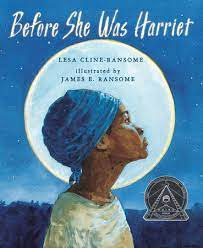
Genre:
This is a picture book biography (Coretta Scott King winner category).
Target Age Group:
Before She Was Harriet is written for elementary aged children, usually ages 5-11.
Summary:
Before She Was Harriet tells the life story of Harriet Tubman. The events of her life are told in reverse order, with each phase being described through the many roles she inhabited, including suffragist, spy, nurse, rescuer, and enslaved person.
Justification:
Besides winning the Coretta Scott King award, this book is also a Jane Addams Children's Honor book, a Junior Library Guild selection, and received starred reviews in Publisher's Weekly, Kirkus Reviews, and Booklist.
Evaluation:
For this book I will be reviewing the illustrations, style & language, and content.
Illustrations
James E. Ransome's watercolor illustrations fill every page with rich color. The most prominent colors are yellow and blue. Yellow draws attention to challenges and hardships, such as the fiery torches and yellow dirt road pictured with the confederate army, the yellow walls of the makeshift hospital, and the yellow banner of the suffragists. A contrasting deep blue is used to show the night skies and water surrounding the boats for scenes depicting escape and freedom or peaceful reflection. Harriet is shown wearing blue in every illustration. While this specific symbolism might not be apparent to children, the distinction of the colors used adds to the mood of each scene.
Style and Language:
Before She Was Harriet is written in free verse. The writing has a lyrical quality to it, and lends itself well to being read aloud, perfect for the target audience. The phrase, "Before she was. . ." repeats throughout the story, highlighting the many roles Tubman filled in her life. There is no punctuation in the text, which adds to the feeling of flow and connection from one line to the next. While many words are used to describe Tubman, the very last word in the book is "free", emphasizing the value that she dedicated her life to.
Content
This book does not shy away from or sugarcoat the difficult subject matter of slavery and war. It uses simple and straightforward phrases such as "hatred and fear" and "bloodied dirt" and speaks of "slave owner(s)" who "punished her with lashes". This frankness shows respect readers of all ages and for the subject of the book. Before She Was Harriet begins with Harriet as an old woman, and works its way backward chronologically through her life. This reversed timeline serves to make her story all the more inspiring as the reader is led from her great accomplishments to her challenging first circumstances.
Before She Was Harriet is a simple and quick read, and could be a good introduction for young children to the topics of slavery and the Civil War. The beautiful illustrations and text in verse are sophisticated enough to hold the attention of older students as well, and might be a good component for related history lessons. For this reason it would be a valuable addition to classroom or home libraries.
References
Cline-Ransome, L. (2017). Before She Was Harriet (J. E. Ransome, Illus.). Holiday House.
0 notes
Text
Blog #3 Social Media- Instagram Harriet Tubman Museum
For the multi-media social media assignment, I selected the Instagram account of the Harriet Tubman Museum. Images and information about the Harriet Tubman Museum of New Jersey are included in this profile. This museum pays tribute to her legacy by hosting activities that inspire people to get engaged, learn about her, and be bold like she was. She was born in Maryland around the year 1820 and passed away on March 10th, 1913, in Auburn, New York. This biography also taught me how crucial a part Harriet Tubman played in the Underground Railroad and the abolitionist movement. After gaining her freedom, she made nineteen trips back and forth to free others, releasing over 200 slaves, including her parents. Additionally, Ms. Tubman participated in the Civil War as a cook, nurse, scout, and spy for the Union Army. The National Association of Colored Women was also founded with her assistance.[1] She was determined to protect so many other people's freedoms, and she made a powerful impact by doing so.
From our schoolwork, we learned about the image below that is comparable to the one of Harriet Tubman on the website below. The woman appears respectable and tough in both pictures while wearing middle-class clothing. This demonstrates the fact that they weren't just profiled as slaves. The pictures aid in dispelling racial preconceptions and promote race and ethnicity to others in a favorable light. Both works have the intersectionality of being female and African American, which made it more difficult for them to achieve independence. For example, Harriet Tubman battled for women's suffrage, which was not granted until after her passing.

Unknown, Sojourner Truth “I Sell the Shadow to Support the Substance,” 1864, albumen silver print from glass negative, 8.5 x 5.4 cm (3 3/8 x 2 1/8 in), The Met.
instagram
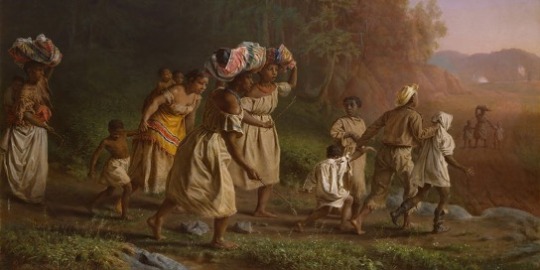
An art piece of Harriet Tubman assisting slaves to escape to freedom.
Greenspan, Jesse. “8 Key Contributors to the Underground Railroad.” HISTORY, 8 Feb. 2019, www.history.com/news/8-key-contributors-to-the-underground-railroad.
instagram
The Joint Resolution of Congress stated on the memorial event to honor Harriet Tubman, "courageous and dedicated pursuit of the promise of American ideals and common principles of humanity continues to serve and inspire all people who cherish freedom."
Because she struggled for both her own freedom and the freedom of the slaves because of her race, this profile sparks a discussion about race and ethnicity. Despite the serious effects of violence, she did not hesitate to assist others. The profile celebrates the present and achieving freedom and independence while acknowledging the past and what has occurred. This page serves as inspiration for others, reminding them that effort and persistence pay off. She made it possible for future generations to preserve and be proud of their culture.[2] Because of how far society has advanced to form one, cohesive community, everyone can take part in these holidays, which is something we should all be grateful for.
[1] “Login • Instagram.” Www.instagram.com, www.instagram.com/harriettubmanmuseum/. Accessed 14 July 2023.
[2] “Login • Instagram.” Www.instagram.com, www.instagram.com/harriettubmanmuseum/.
0 notes
Text
TUBMAN'S INSPIRING BIOGRAPHY
Harriet Tubman was an extraordinary African-American abolitionist, humanitarian, and Union spy during the American Civil War. Born into slavery around 1822 in Dorchester County, Maryland, her birth name was Araminta Ross. She later adopted the name Harriet Tubman after marrying John Tubman, a free African-American man.
Tubman’s life was shaped by the harsh realities of slavery. She endured…

View On WordPress
0 notes
Text
Untold Stories Of Great Americans: A Journey through the History of USA’s Most Influential Figures
The United States of America has a rich and diverse history, shaped by the stories of its most influential figures. From founding fathers to civil rights activists, scientists, and artists, their achievements have impacted society and the world at large.
However, amidst the well-known names and celebrated accomplishments, there are also untold stories waiting to be discovered in the History Of USA. Through this article, we will shed light on the lesser-known aspects of their lives, uncovering the struggles, triumphs, and complexities behind their achievements.

Benjamin Franklin – The Man behind the Myth
Benjamin Franklin is known as one of the founding fathers of the United States, a Renaissance man who excelled in numerous fields such as science, politics, and literature. However, there is more to his story than just his achievements, and you can find them in both offline and online Biography of Great People of the USA.
In his later years, Franklin's personal life was also marked by tragedy. He struggled with health issues, including gout and kidney stones, which he treated with unconventional methods such as sitting in a cold bath for hours. These challenges did not stop him from continuing to contribute to society until his death, leaving a legacy that still influences the world today.
Harriet Tubman – The Heroic Conductor of The Underground Railroad
Harriet Tubman is known as the conductor of the Underground Railroad, a network of secret routes and safe houses used by slaves to escape to freedom. However, her story goes beyond this significant accomplishment. Tubman was born into slavery and suffered a traumatic head injury as a child that caused lifelong seizures and headaches.
Tubman also fought for women's rights and was a suffragist who worked alongside Susan B. Anthony and Elizabeth Cady Stanton. She was also a nurse and spy during the Civil War, becoming the first woman to lead a military expedition in the process. Later in life, she was active in the women's suffrage movement and lived to see the 19th Amendment granting women the right to vote.
Abraham Lincoln – The Great Emancipator & Unifier Of A Nation
Abraham Lincoln is known in the History of USA for his role in the Civil War and his Emancipation Proclamation, which declared all slaves in Confederate territory to be free. However, his life was marked by numerous setbacks and struggles. Lincoln grew up in poverty and received very little formal education. He also suffered from depression and lost two sons to illness.
Despite these challenges, Lincoln went on to become a successful lawyer and politician, eventually becoming the 16th President of the United States. He led the country through its most significant crisis, preserving the Union and abolishing slavery in the process. Lincoln's leadership and dedication to justice and equality continue to inspire people around the world today.
Martin Luther King Jr. – The Preacher Who Became The Voice Of A Movement
Another must-read Biography Of Great People, Martin Luther King Jr. is known as one of the greatest civil rights activists in American history, leading the movement for racial equality through his speeches, marches, and protests. However, his personal life and struggles are often overlooked. King grew up in the segregated South and faced discrimination and violence from a young age.
Despite these challenges, King went on to become a Baptist minister and used his platform to advocate for social justice and civil rights. He faced numerous obstacles, including imprisonment, harassment, and death threats, but his dedication to nonviolent resistance and his message of love and equality inspired millions of people around the world.
For more details visit our website tvbanter.net
0 notes
Text
Who Was Harriet Tubman?
Dorchester county, Maryland, U.S.—died March 10, 1913, Auburn, New York), American bondwoman who escaped from slavery in the South to become a leading abolitionist before the American Civil War.
https://www.britannica.com/biography/Harriet-Tubman

View On WordPress
0 notes